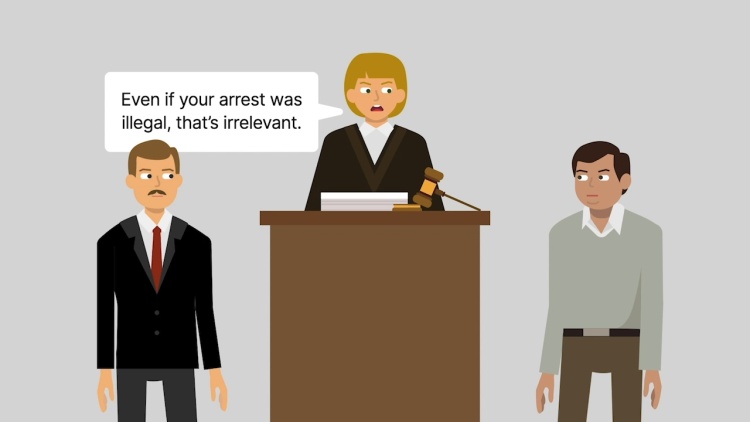Immigration and Naturalization Service v. Lopez-Mendoza
United States Supreme Court
468 U.S. 1032 (1984)
- Written by Susie Cowen, JD
Facts
Adan Lopez-Mendoza and Elias Sandoval-Sanchez (defendants) were Mexican citizens who were illegally present in the United States. Both Lopez-Mendoza and Sandoval-Sanchez claimed that they had been unlawfully arrested by Immigration and Naturalization Service (INS) (plaintiff) agents at their places of employment. After his arrest, Lopez-Mendoza signed an affidavit stating that he was a Mexican citizen who had entered the United States illegally. INS initiated deportation proceedings, but Lopez-Mendoza moved to terminate the proceedings on the ground that his arrest was illegal. The immigration judge held that the legality of Lopez-Mendoza's arrest was irrelevant to the deportation proceeding, admitted Lopez-Mendoza's affidavit into evidence, and found Lopez-Mendoza to be deportable. Lopez-Mendoza never specifically objected to the admission of the affidavit. Lopez-Mendoza appealed, but the Board of Immigration Appeals (BIA) dismissed his appeal. After Sandoval-Sanchez's arrest, he exercised his right to a deportation hearing and eventually admitted to INS agents that he was illegally present in the United States. At his immigration hearing, he moved to suppress the INS's evidence against him as the fruit of an illegal arrest. The immigration judge denied the motion and found Sandoval-Sanchez deportable, and the BIA dismissed Sandoval-Sanchez's appeal. The United States Court of Appeals for the Ninth Circuit reversed Sandoval-Sanchez's deportation order because his detention violated the Fourth Amendment, and his statements to INS agents were the product of that detention. The Ninth Circuit also vacated Lopez-Mendoza's deportation order and remanded for a determination of whether his Fourth Amendment rights had been violated. The United States Supreme Court granted certiorari.
Rule of Law
Issue
Holding and Reasoning (O’Connor, J.)
Dissent (Brennan, J.)
Dissent (White, J.)
What to do next…
Here's why 899,000 law students have relied on our case briefs:
- Written by law professors and practitioners, not other law students. 47,000 briefs, keyed to 994 casebooks. Top-notch customer support.
- The right amount of information, includes the facts, issues, rule of law, holding and reasoning, and any concurrences and dissents.
- Access in your classes, works on your mobile and tablet. Massive library of related video lessons and high quality multiple-choice questions.
- Easy to use, uniform format for every case brief. Written in plain English, not in legalese. Our briefs summarize and simplify; they don’t just repeat the court’s language.





